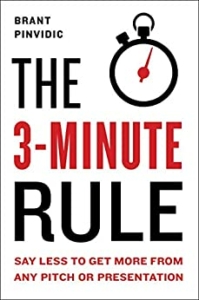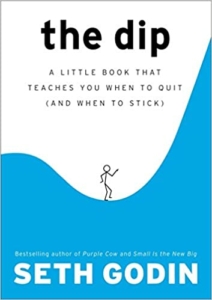Use Titles to Accentuate the Point, Not Make It
This week’s Say It For You blog posts feature more helpful advice based on Brant Pinvidic’s powerful little book The 3-Minute Rule….
You need bullet points to accentuate the point, not make it for you, observes TV producer and sales coach Brant Pinvidic. You don’t need full sentences, either, he says – the slides function as “Post-it” notes. Even Robert Gaskins, co-creator of Power Point itself, says the technology was never intended for show an entire proposal, just a quick summary.
From a blog marketing point of view, there are several similarities between blog titles and individual bullet points in a Power Point presentation. Titles matter a lot in blogs for search: key words and phrases help search engines make the match between online searchers’ needs and what your business or practice has to offer. Equally important, once your post has been “served up” by the search engine, the reader needs to be encouraged to click on the link in order to read the content. True to Pindivic’s advice, if the title gives away too much of the content, readers wouldn’t need to progress to the content itself!
In terms of using bullet points in blog posts themselves, it seems content writers either love or absolutely abhor those little dots. From what I’ve been told, search engines like bullet points – a lot. Myself, I like bulleting for breaking down complicated information into digestible form. I try to follow the Reuters Handbook of Journalism guidelines for using bullet points, using no fewer than two and no more than five at a time, and keeping them in active voice and present tense.
Going back to blog titles, in a very real sense, a blog post title represents a promise. Of course, since business blogs should resemble advertorials more than ads, the title is “promising” the reader a benefit in exchange for progressing to the next step. If you click on this title ( the implication is), it will lead to you obtaining some desirable result – more savings, more actionable knowledge more confidence, more beauty, more health, more job security, more safety more peer approval, more wealth…..Alternately, the implied promise might relate to reducing an undesirable effect – pain illness, hassle, dirt, risk, fear, harassment, debt….
The skill, of course, lies in Brant Pinvidic’s caution to do all that in a title that somehow manages to accentuate the point without serving it up – prematurely – with all the trimmings.
To me, one aspect of blog marketing is that blogs – beginning with their titles – have to convey a feeling of getting closer to the actual human beings running the business or practice, closer than the feeling readers might get from brochures, billboards, or even websites. If the blog post title can somehow accentuate that concept – it will be a winner.






Follow us online!